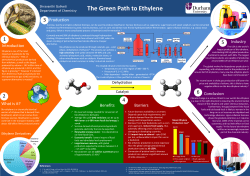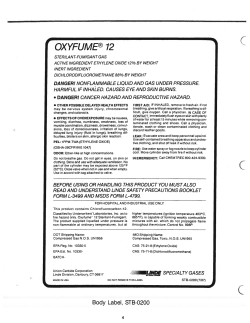
1. Balance the following equation. What is the sum of... products? C
1. Balance the following equation. What is the sum of the coefficients of the reactants and products? C7H16 + ____ O2 – > ____ CO2 + ____ H2O a) 21 b) 24 c) 18 d) 27 2. An atom has an atomic number of 7 and a mass number of 14. How many electrons will it have in its valence level: a) 2 b) 3 c) 4 d) 5 3. Calculate the molar concentration of the solution produced by dissolving 11g of K2SO4 in 125 cm3 of water (atomic masses are: K=39; S=32; O=16) a) 0.05 M b) 0.5 M c) 0.25 M d) 0.025 M 4. Select a group of acids according to Brönsted concept: a) CH3COO–, HCl, H2O, HCO3– b) HCl, H2O, NH4+, HS– c) H2SO4, Cl–, H3O+, CH3NH2 d) H2CO3, CH3NH2, H3O+, HCl 5. The bond between sulfur and chlorine would be: a) not formed b) ionic c) polar covalent d) nonpolar covalent 6. How many protons, neutrons, and electrons does monovalent cation of 31H have? a) 1, 2, 0 b) 2, 1, 3 c) 3, 2, 1 d) 1, 2, 3 7. As you move up and to the right on the periodic table: a) atomic radius increases and electronegativity increases b) atomic radius decreases and electronegativity increases c) atomic radius increases and electronegativity decreases d) atomic radius decreases and electronegativity decreases 8. Balance the equation: x Mn2+ + y PbO2 +z H+ –– > x MnO4- + y Pb2+ + u H2O a) b) c) d) x 5 2 2 1 y 2 3 5 2 z 4 6 4 8 u 2 3 2 4 9. Where does the metal react with acid to form salt? a) I and II b) II and IV c) III and IV d) I and IV 10. Discoloration of KMnO4 appears in tube no: 11. Into 3 beakers with 100g of water each (temp. 313K – 40oC), were added 80g KNO3, 30g KCl and 10g of K2SO4 respectively. Which salt will be completely dissolved? a) only KCl b) KCl and K2SO4 c) only KNO3 d) all salts 12. How many cm3 of concentrated 96% H2SO4 (d=1.84 g/cm3) are required to prepare 1 dm3 0.125 M a) ~ 6.9 cm3 b) ~ 20.7 cm3 c) ~ 26.7 cm3 13. Choose the group in which there are only acidic oxides: a) CO2, Cr2O3, PbO b) NO, NO2, N2O5 c) CrO3, NO2, SO2 d) CrO, CrO3, Cr2O3 d) ~ 33.6 cm3 14. Water solution of acid (formula HR) contains 0.2 mol R- and 2 mol of undissociated HR molecules. Degree of dissociation is equal: a) 0.091 b) 0.100 c) 0.182 d) 0.200 15. What is the hybridization of the carbon atom in urea? a) sp b) sp2 c) sp3 d) sp4 O H2 N c NH2 16. Amino acids are essential to life in that they are what make up proteins. Without proteins, the world as we know it would be a barren, lifeless entity. Amino acids can "join" together to form chains of amino acids. What is the bond that is formed between two amino acids specifically presented? a) b) O C C O N H c) d) C O C C C 17. Reaction: A - H2O C B A a) b) c) d) ethanol ethanol acetic acid ethanal hydrate + HCl D + Na - NaCl butane + H2 B ethylene (ethene) acetylene acetaldehyde acetic acid C ethylene (ethene) ethylene (ethene) ethanol ethanol D ethylene chloride ethylene chloride ethylene chloride sodium ethoxide 18. What type of reaction is observed between trans-2-hexene with hydrogen bromide? a) Substitution reaction b) Addition reaction c) Condensation reaction d) Oxidation reaction 19. In cellulose, the monosaccharide molecules are bonded by: a) ester linkage b) ether linkage c) glycosidic bond d) oxygen-oxygen bond 20. The result of oxidation of 2-propanol is: a) propanal b) propanone c) propanoic acid d) propene 21. Which formula represents a compound formed in the muscles during physical exercises? a) CH3CH(NH2)COOH b) C6H4(OH)COOH c) C15H31COOH d) C2H4OHCOOH 22. Tollens test enables distinction of: a) butene from butane b) butanal from butanone c) butanal from propanal d) butanone from propanone 23. Secondary alcohol is: a) 3-methyl-1-butanol b) 3-methyl-3-hexanol c) 2-methyl-2-pentanol d) 3-methyl-2-butanol 24. The following compound called sorbitol is obtained from glucose during: a) b) c) d) oxidation reaction neutralization reaction hydrolysis reaction reduction reaction 25. What is produced when the following molecule is polymerized? a) b) c) d) teflon polyvinyl chloride polystyrene saran
© Copyright 2025





















